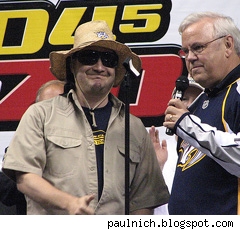Ka’Deem Carey is one of the best backs in the country, and he’s going to get his yards. If the Wildcats get him the ball 25 times, he’ll run for 125 or more. The key for the Ducks is to make him work for those yards, limit explosion plays (he’s not breakaway threat, but a steady pounder who hits the hole quickly) and force some stops.
Dee-nied: Derrick Malone says he is good to go after injury his shoulder last week, and Nick Aliotti and Don Pellum need the linebacker unit to have a focused, aggressive game against an Arizona team that likes to attack underneath and up the middle. 65% of Ka’Deem Carey’s runs come between the tackles (Eric Evans photo, goducks.com).
The Ducks gave up 157 yards to Tyler Gaffney and could not get off the field. Bishop Sankey of Washington pushed them downhill for 167 and two touchdowns, and he broke his longest run of the season, a 60-yarder that Oregon defensed very poorly. Remember also that the #3 back from Virginia broke a long one on the Webfoot defense, much to the delight of Ed Cunningham in the broadcast booth.
Oregon’s linebackers are the key to this game defensively. The Wildcats run for 263.7 yards a game, and everything they have seen in film will lead them to believe that is the secret to upending the heavily-favored visitors. Quarterback B.J. Denker likes to throw underneath a lot, the quick-throwing game that WSU used so effectively earlier this year. The Ducks need a solid game from Derrick Malone, Rodney Hardrick, Bo Lokombo, Joe Walker and Rahim Cassell, filling holes, being tenacious, shutting down plays at first contact. Like most spread teams Arizona relies on rhythm and tempo, and the Duck LB corps has to assert themselves.
Denker’s only been sacked 14 times, and he runs really well. The Oregon defensive line has to keep him contained and rush under control, not give him easy lanes to take off out of the pocket. When he does, Malone and company have to cut him off and make that one-on-one tackle. No Kevin Hogan miraculous escapes.
Rich Rodriguez’s squad, 6-4, has beaten the six worst teams on their schedule and lost to the four best, Washington, USC, UCLA and WSU. They’ve beaten all the bottom feeders of the conference. All of their losses have been close, except Washington, and due to the PAC-12 schedule rotation, they won’t have to play The Cardinal or the Beavers this year.
The threat level in this game is low unless the Ducks help them with turnovers or inattention. Offensively, the Ducks need to rediscover their running game which has endured a two-game slump. They’re not getting a push or consistent execution at the line, particularly from the guards.
Curiously, even though Marcus Mariota hasn’t run much, teams are still slow-playing at defensive end and linebacker, forcing him to give rather than crashing down on the running back. Both Stanford and Utah rallied to the ball well and got too much penetration. Oregon needs the running game for balance. Lately they’ve had to pass to set up the run, but this week, with the forecast calling for 53 degrees and intermittent showers, heavy at times, it’s time to get Byron Marshall and Thomas Tyner loose. Marshall needs just 9 yards to reach the thousand-yard mark. In spot duty Tyner has added 496, 6.5 yards a carry.
All four of Oregon’s principal ball carriers (add Mariota and De’Anthony Thomas) are over 6.5 yards a carry running the football, and each has at least one td of 40 yards or longer. The ‘Cat defense allows 224 a game through the air and 164 on the ground, and those averages are misleading–they got a great statistical boost from a very soft nonconference schedule.
The last issue is focus. Going on the road with a chance to win the conference title and the right to go to the Rose Bowl by winning out, the Ducks need to show discipline, execution and attention to detail. Letting teams hang around and looking disorganized early is a bad habit that will one day bite them in the tailfeathers.
The team has to shake off whatever lingering disappointment they feel about their slim national championship chances and begin to play they way they would need to play to beat a team like Ohio State in a big game in January. That means getting out of the gate cleanly, taking advantage of their opportunities, and finishing drives.
Provided Oregon doesn’t leave points on the field and cripple themselves with turnovers and penalties, they should win this game 38-20.
Add The Sports Daily to your Google News Feed!
